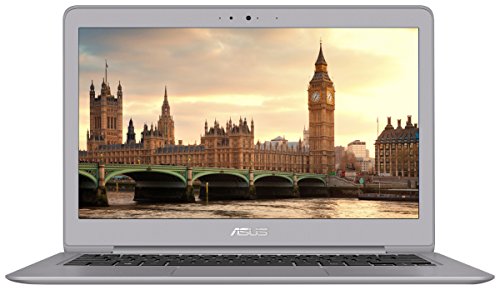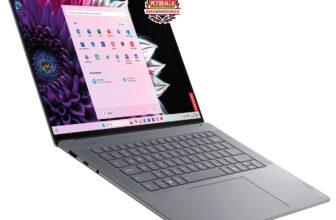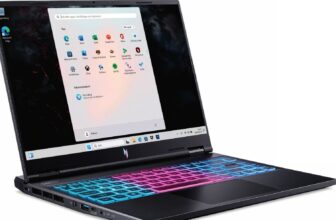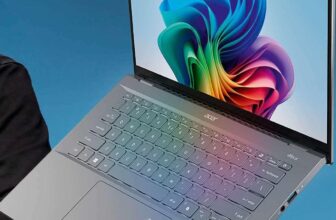Asus ZenBook 13 (2018) Review: Sounds better than it looks

Asus makes some of the most affordable lightweight laptops (often called ultra-portables), like the ZenBook UX410UA, a lightweight aluminium laptop.
Table of Contents
[sc name=”ad 2″]
But it also competes directly with the likes of Apple, Dell and HP, and this latest model focuses on no-compromise performance with a quad-core eighth-generation Intel i5 processor and Nvidia GeForce MX150 graphics card, all in a revamped case that’s just over half an inch thick, yet fits in a proper set of ports, a Windows Hello fingerprint reader, and stereo speakers that live up to their Harmon Kardon branding.
The screen is not top quality, but the ZenBook 13 has lots of processing power
The jury’s out on whether the glossy lid feels classier or cheaper than brushed metal, but what we can definitely say is that it picks up more fingerprints than a crime-scene investigators’ convention. Depending on where you buy it, there’s a choice of grey or Asus’s favourite blue.
The whole machine has a solid feel, and we found both the keyboard and the large touchpad very responsive. This could certainly pass for a business-grade laptop, but without the traditional clunkiness.
Shift your attention to the upper half, though, and all’s not so rosy. The bezels around the screen are narrow, but nowhere near as small as in Dell’s Infinity Edge design.
The screen itself falls behind the quality of the XPS 13, covering only 85 percent of the sRGB colour range and with poor accuracy within that. Nor is it anywhere near as bright – although we’ve seen a lot worse, and the matt finish avoids distracting reflections. For general Windows 10 work it’s fine, and games and films don’t look so dull that you’d worry about it. But it rules out the ZenBook 13 for serious photo or video editing.
That’s a shame, because it’s got all the processing power you’d need. Its i5-8250U processor did very well in our tests, beating most other laptops we’ve seen with the same chip.
The reason is its cooling system, which prevented the laptop from overheating. The fans stayed relatively quiet even when working hard, while the MX150 graphics card pulled it well ahead of the XPS 13 in 3D graphics tests. The 256GB SSD wasn’t as quick as we expected, and vastly slower than Dell’s, but still much faster than a hard drive.
If we had to choose, we’d concur with Asus and skimp on this rather than the processor.
VERDICT:
When you purchase through links on our site, I may earn an affiliate commission. Here’s how it works.
ALTERNATIVE:
Asus UX430UA
If you can put up with last year’s case design and no graphics card or fingerprint reader, you get a faster processor
SPECIFICATIONS
1.6GHz Intel Core i5-8250U quad-core processor • 8GB memory • 256GB SSD • 133in 1920×1080-pixel screen • Webcam • 802.11ac Wi-Fi • USB Type-C port • 2x USB 3.0 ports • HDMI port • MicroSD card reader • Windows 10 Home • 13.9x310x216mm (HxWxD) • 1.12kg











